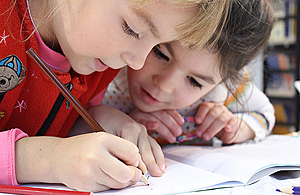Keeping primary and secondary pupils motivated and engaged at a distance
A very large multi-academy trust (MAT) which oversees a mixture of primary and secondary schools reveals its approach.

Our schools have found that pastoral care and continuing to communicate online is important. Bitesize information can help keep pupils interested and engaged when working online.
We’ve found that offering information through flipped learning methods is a good way to start teaching pupils remotely. This involves introducing them to material before class, then giving them more information during lessons when they can be directly supported. This can be asynchronous (when pupils learn the same material at different times or locations) or synchronous (when pupils learn in real time with the teacher) and can be finished off by offering group work or activities to deepen learning.
Our schools that have technology already embedded within teaching and learning have developed effective learning communities. We are able to carry on teaching in a remote environment, if not at typical school hours, certainly for most of the day.
We’ve decided to make contact immediately if we notice a lack of engagement, picking up the phone and speaking to the parent. Technology is an enabler and this includes telecommunication too.
The Department for Education gathered these examples of remote education practice by consulting with schools and colleges across England. Names of individuals and schools have been removed to protect their privacy.